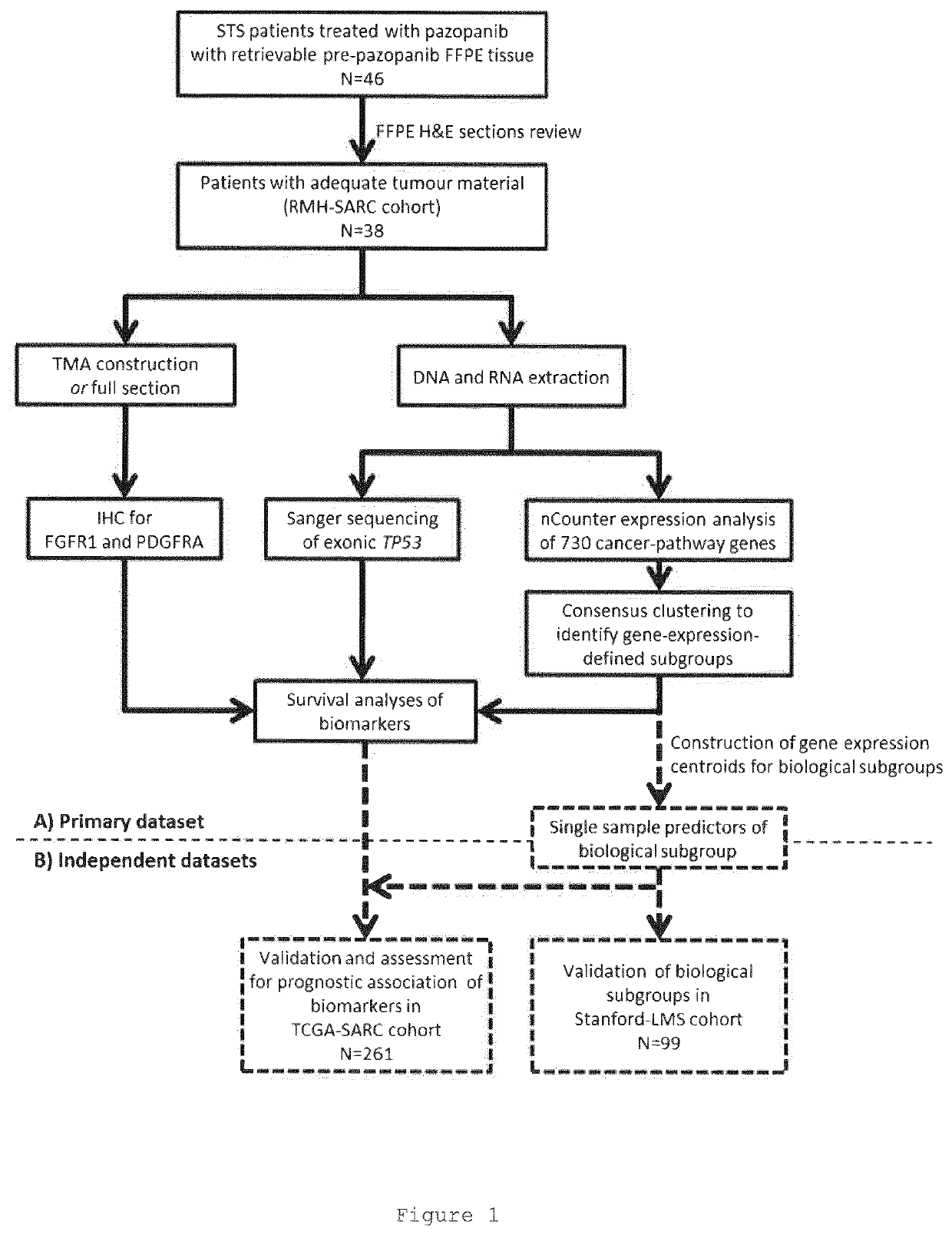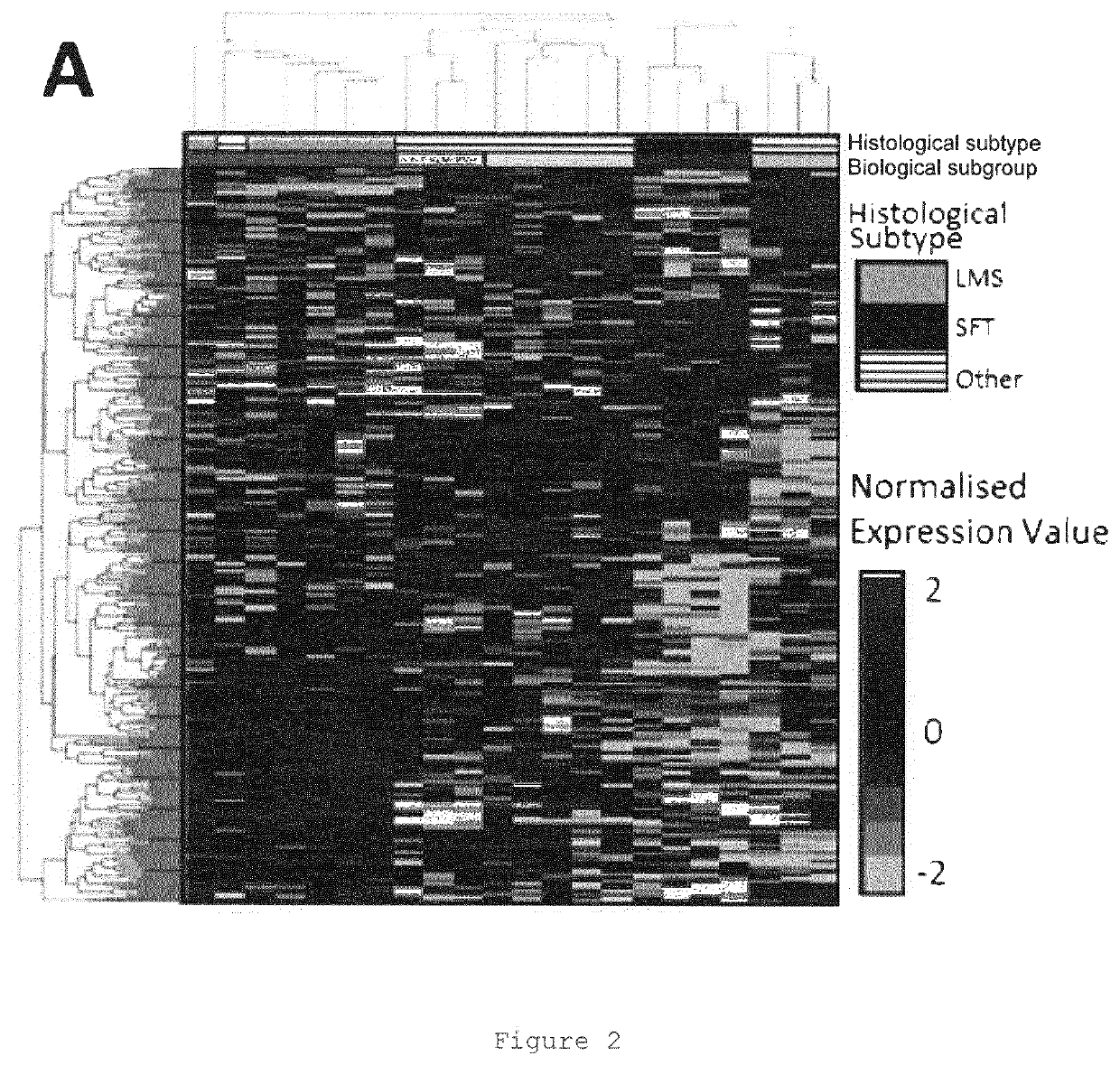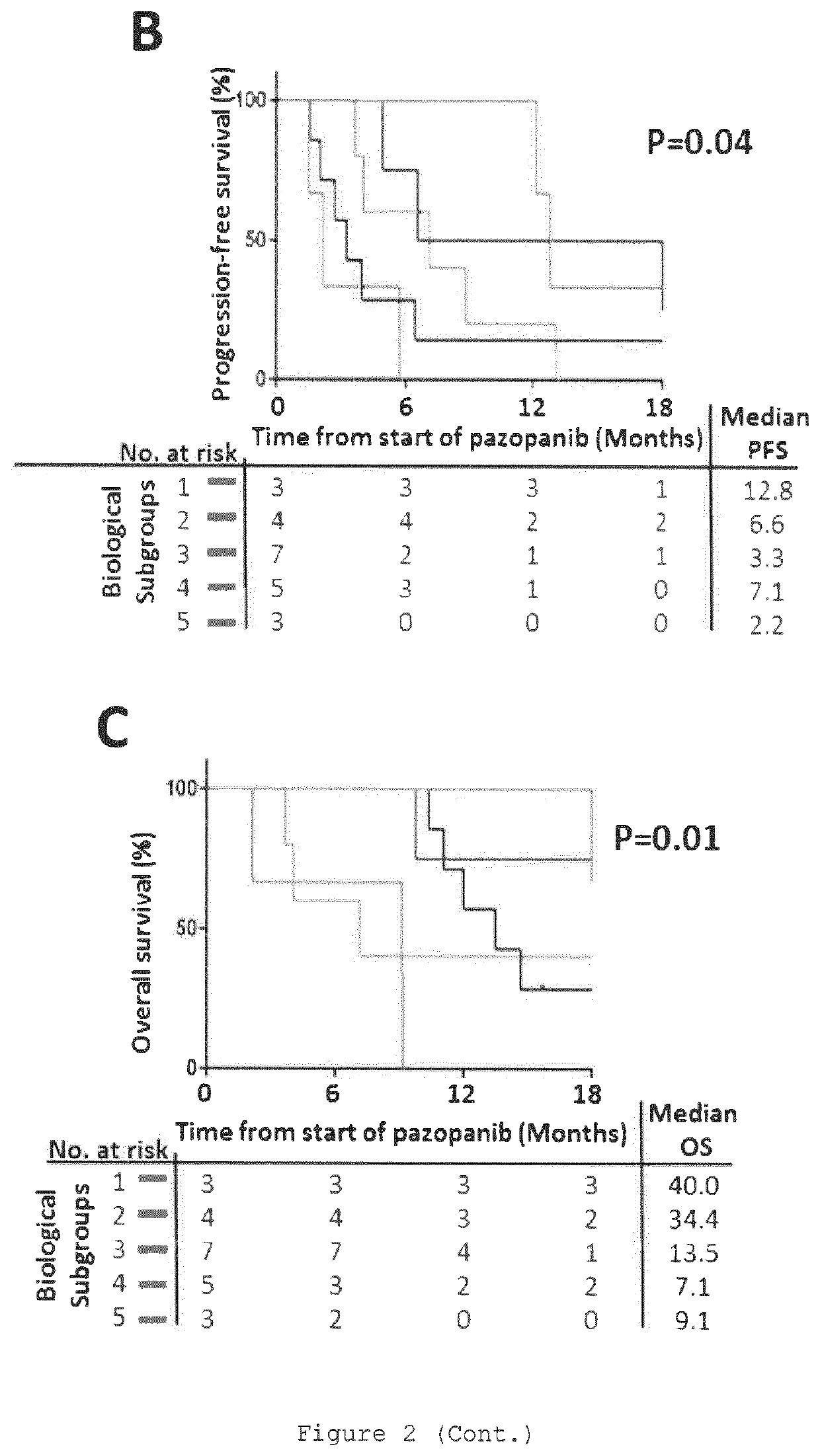Materials and methods for stratifying and treating cancers
a cancer and cancer technology, applied in the field of materials and methods for stratifying and treating cancers, can solve problems such as funding limitations
- Summary
- Abstract
- Description
- Claims
- Application Information
AI Technical Summary
Benefits of technology
Problems solved by technology
Method used
Image
Examples
example 1
Materials and Methods
Patient Selection and Treatment
[0577]Collection and analysis of anonymised archival FFPE tissue and associated clinical data was approved in as a sub-study protocol amendment to the Royal Marsden-sponsored Elucidation of a Molecular signature of Pazopanib Response in Advanced soft tissue Sarcoma including solitary fibrous tumours (EMPRASS) study. (RMH Committee for Clinical Research reference 4107, NHS Research Ethic Committee reference 14 / WA / 0164). This cohort is referred to as RMH-SARC in this manuscript.
[0578]Patients were retrospectively identified for inclusion by search of institutional database and electronic patient records compiled during routine clinical practice. Eligibility criteria for inclusion were: i) histopathological diagnosis of soft tissue tumour as confirmed by contemporaneous report by specialist sarcoma histopathologist; ii) received at least one dose of pazopanib for treatment of unresectable or advanced STS; iii) available FFPE tumour sp...
example 2
Materials and Methods
Patient Selection and Treatment
[0614]Patients were identified by retrospective search of prospectively compiled institutional database and electronic patient records. Eligibility criteria for inclusion were: i) histopathological diagnosis of soft tissue tumour as confirmed by contemporaneous report by specialist sarcoma histopathologist; ii) received at least one dose of Pazopanib for treatment of unresectable or advanced STS; iii) available FFPE tumour specimen, obtained from patient prior to first dose of Pazopanib. Treatment and response monitoring was as per local practice, with Pazopanib at 800 mg once daily until disease progression, intolerable toxicity or significant clinical deterioration. Dose interruption and / or reduction were used as per treating physician's judgement. Baseline clinico-pathological characteristics and survival data was collected on retrospective review of contemporaneous electronic medical records. All related radiological imaging wa...
PUM
| Property | Measurement | Unit |
|---|---|---|
| Nanostring technology | aaaaa | aaaaa |
Abstract
Description
Claims
Application Information
 Login to View More
Login to View More - R&D
- Intellectual Property
- Life Sciences
- Materials
- Tech Scout
- Unparalleled Data Quality
- Higher Quality Content
- 60% Fewer Hallucinations
Browse by: Latest US Patents, China's latest patents, Technical Efficacy Thesaurus, Application Domain, Technology Topic, Popular Technical Reports.
© 2025 PatSnap. All rights reserved.Legal|Privacy policy|Modern Slavery Act Transparency Statement|Sitemap|About US| Contact US: help@patsnap.com



